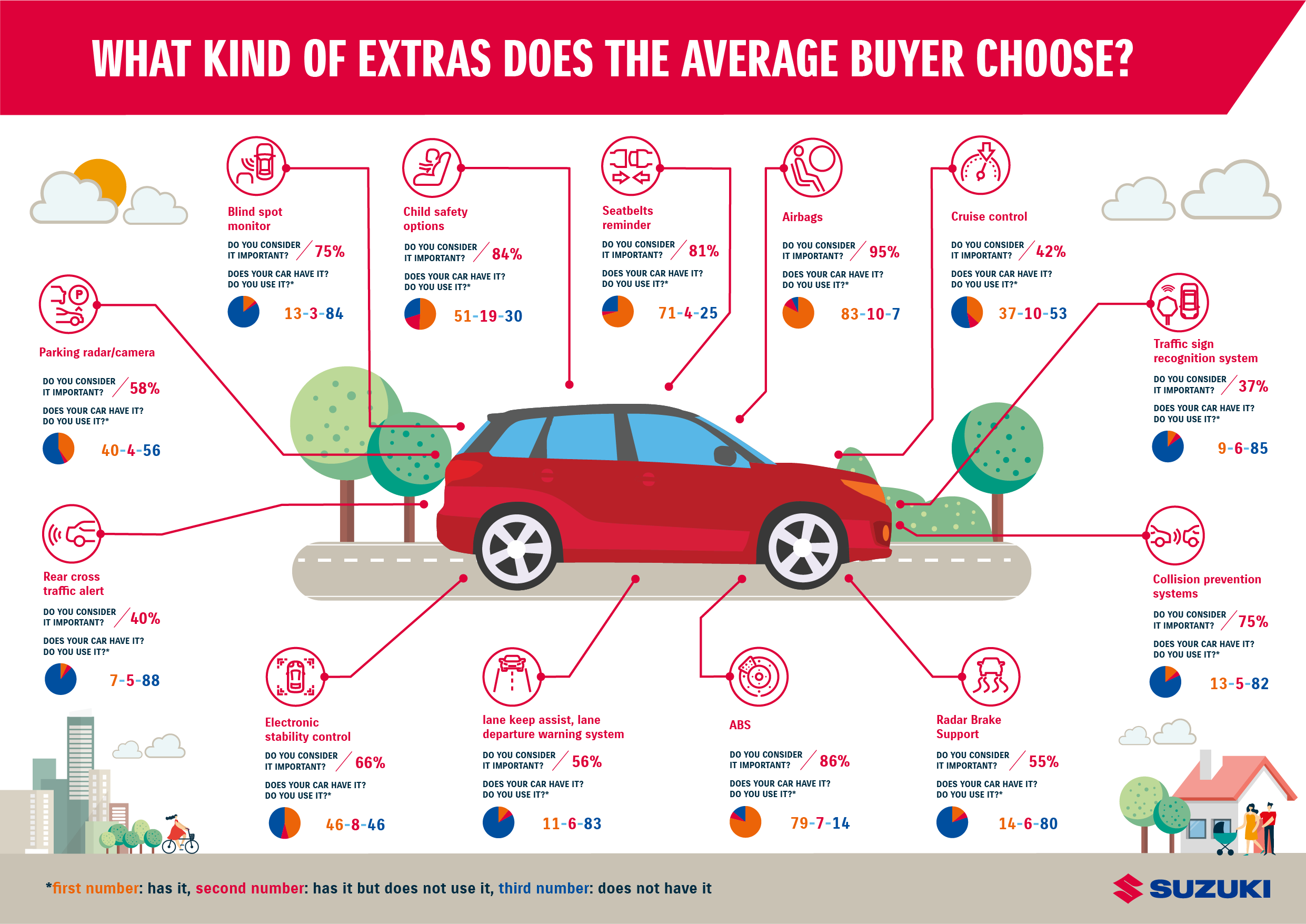news
The Majority of Drivers Do Not Choose or Use Safety Extras
Although drivers today have the option to choose several safety extras that help make driving easier and accident-free, the majority forgo this opportunity because of cost efficiency or a lack of information, Magyar Suzuki’s representative survey has revealed. Hungarian drivers consider air bags, ABS, seatbelts and child safety options to be the most important, and these are widely used. However, the majority has not even heard of other options.
In recent decades, several technical innovations have been introduced in cars, which have resulted not only in a higher price, but easier maneuverability and safer driving as well. Air bags, ABS and parking assistance systems are usually included in base models today. However, a representative survey conducted by Magyar Suzuki with the assistance of Ipsos has revealed that Hungarian customers often do not take advantage of our extra accessories even when they can afford them. When buying a new car, customers choose primarily based on purchase price (54% of survey participants), then on maintenance costs (50%), followed by function (37%), with safety ranking only the seventh (28%) on the list of most important purchase criteria. Female customers are often accused of choosing based on colour, appearance or aesthetics, but the survey has confirmed that brand image plays a prominent role in making a decision regardless of gender.
Education would be important
Informed drivers choose safety extras with great care, but only a few of them realize their role in accident prevention, and a very large amount of drivers are simply unaware of the majority of innovations. Consumers consider airbags (95%), ABS (86%), child safety functions (84%) and seatbelt reminder electronics (81%) to be the most useful in terms of accident prevention. Feedback has revealed that these technologies are the most widely used. However, dealers think education would be the most beneficial regarding collision avoidance and preventions systems, radar brake support (RBS) and electronic stability control systems, as these are the least known among Hungarian car buyers. Although participants consider driving assistance accessories to be important, they largely believe that the safety equipment of cars does not contribute to traffic safety to a great degree.
Have to Be Aware of Our Own Abilities
A driving technique trainer would agree that this is beneficial, but would add that it would be important to be aware what the car is capable of, and how the driver is able to utilise opportunities provided by innovation to make driving safer.
“Researchers of accident causes have determined that in addition to the improvement of technology, innovations should match the training level of drivers. Western premium brands have previously organised driving technique training sessions financed by car manufacturers for their customers. There are also brands today that provide vehicle control training if the engine power is high or the vehicle uses a special drivetrain,” says driving technique trainer Gyula Székely. “Extra accessories and electronic gadgets installed in cars help protect lives, but they aren’t there to encourage pushing our limits.”
He believes all cars should preferably have automatic transmission, engine performance of at least 75 kW for safe and dynamic participation in traffic, tempomat, also known as cruise control (especially for those who take long trips frequently), airbags, ABS, child safety equipment, as well as ESP which enables vehicle stability monitoring.
Learning Emergency Braking Is Crucial
According to the professional, parking radars are also useful. For ten years now, learners who have passed the theoretical exam move on to learn driving in traffic right away, without practising first on a closed track, therefore they may not learn how to park properly.
“In general it would be important – and it would perhaps not be excessive to make it compulsory – to sufficiently practice correct emergency braking. The majority of drivers do not apply full force during braking, so the built-in emergency braking assistant cannot help them. The car’s safety feature is only able to intervene upon a quick release of the accelerator pedal and a very fast and forceful press on the brake pedal. A car equipped with an old version of ABS going at 100 km/h will stop after 42 meters on a dry road. A car equipped with a modern emergency braking assistant, provided the driver acts correctly, will stop after 36 meters,” driving technique trainer Gyula Székely pointed out.



